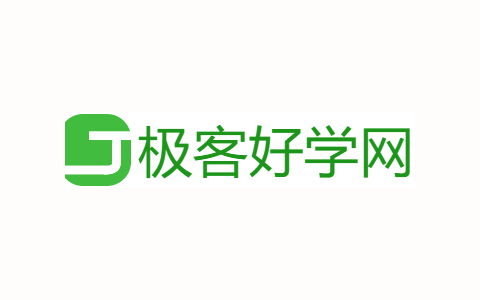Python 列表方法有多种方法可用于处理 Python 列表,下面我们将介绍可用于Python列表的所有方法,例如,append()、copy()、insert() 等。
Python 中的列表方法
| 编号 | 方法 | 描述 |
|---|---|---|
| 1 | append() | 用于将元素追加和添加到列表末尾。 |
| 2 | copy() | 创建列表的浅拷贝。 |
| 3 | clear() | 此方法用于从列表中删除所有项目。 |
| 4 | count() | 返回值给定元素在列表中的出现次数。 |
| 5 | extend() | 将可迭代的每个元素添加到列表的末尾 |
| 6 | index() | 返回第一个值为给定元素的索引。 |
| 7 | insert() | 在列表中的给定索引处插入给定元素。 |
| 8 | pop() | 删除并返回列表中的最后一个值或给定的索引值。 |
| 9 | remove() | 从列表中删除给定的对象。 |
| 10 | reverse() | 颠倒列表中的元素顺序。 |
| 11 | sort() | 按升序、降序或用户定义的顺序对列表进行排序。 |
| 12 | min() | 计算List中所有元素的最小值。 |
| 13 | max() | 计算List所有元素的最大值。 |
在列表中添加元素
Python append()
用于向列表追加和添加元素。它用于将元素添加到Python中List的最后一个位置。
语法: list.append (element)
# 将列表元素添加为列表的值。
List = ['数学', '化学', 1997, 2000]
List.append(20544)
print(List)
输出:
[‘数学’、‘化学’, 1997, 2000, 20544]Python insert()
在指定位置插入一个元素。
语法:list.insert(<position, element)
注意:提到的位置应该在List的范围内,在本例中是0到4之间,否则会抛出IndexError。
List = ['数学', '化学', 1997, 2000]
# 在索引2处插入值10087
List.insert(2, 10087)
print(List)
输出:
['数学', '化学', 10087, 1997, 2000]Python extend()
将 List2 的内容添加到 List1 的末尾。
语法: List1.extend(List2)
List1 = [1, 2, 3]
List2 = [2, 3, 4, 5]
# 将List2添加到List1中
List1.extend(List2)
print(List1)
# 现在将List1添加到List2中
List2.extend(List1)
print(List2)
输出:
[1, 2, 3, 2, 3, 4, 5]
[2, 3, 4, 5, 1, 2, 3, 2, 3, 4, 5]Python List 的重要函数
一些基本的 Python 列表函数以及如何在列表中使用它们。
Python sum()
计算 List 中所有元素的总和。
语法: sum(列表)
List = [1, 2, 3, 4, 5]
print(sum(List))
输出:
15Python count()
计算列表中给定元素的总出现次数。
语法: List.count(元素)
List = [1, 2, 3, 1, 2, 1, 2, 3, 2, 1]
print(List.count(1))
输出:
4Python length
计算List的总长度。
语法: len(列表名称)
List = [1, 2, 3, 1, 2, 1, 2, 3, 2, 1]
print(len(List))
输出:
10Python index()
返回第一次出现的索引。开始和结束索引不是必需的参数。
语法: List.index(元素[,开始[,结束]])
List = [1, 2, 3, 1, 2, 1, 2, 3, 2, 1]
print(List.index(2))
输出:
1另一个例子:
List = [1, 2, 3, 1, 2, 1, 2, 3, 2, 1]
print(List.index(2, 2))
输出:
4Python min()
计算 List 的所有元素中的最小值。
语法: min(iterable, *iterables[, key])
numbers = [5, 2, 8, 1, 9]
print(min(numbers))
输出:
1Python max()
计算 List 中所有元素的最大值。
语法: max(iterable, *iterables[, key])
numbers = [5, 2, 8, 1, 9]
print(max(numbers))
输出:
9sort()和reverse()函数
Python reverse()
按升序对给定的数据结构(元组和列表)进行排序。Key 和reverse_flag 不是必需的参数,如果没有通过sorted() 传递任何内容,则reverse_flag 将设置为False。
语法:
sorted([list[,key[,Reverse_Flag]]])
list.sort([key,[Reverse_flag]])
List = [2.3, 4.445, 3, 5.33, 1.054, 2.5]
# 设置逆序标志为True
List.sort(reverse=True)
# List.sort().reverse(),反转排序后的列表
print(List)
输出:
[5.33, 4.445, 3, 2.5, 2.3, 1.054]删除列表元素
要删除一个或多个元素,可以使用许多内置函数,例如 pop() 和 remove() 以及 del 等方法。
Python pop()
索引不是必需的参数,如果没有则取最后一个索引。
语法: list.pop([索引])
注意:索引必须在List的范围内,否则会出现IndexError。
List = [2.3, 4.445, 3, 5.33, 1.054, 2.5]
print(List.pop())
输出:
2.5List = [2.3, 4.445, 3, 5.33, 1.054, 2.5]
print(List.pop(0))
输出:
2.3Python del()
使用列表名称和索引提及要删除的元素。
语法:del list.[index]
List = [2.3, 4.445, 3, 5.33, 1.054, 2.5]
del List[0]
print(List)
输出:
[4.445, 3, 5.33, 1.054, 2.5]Python remove()
使用列表名称和元素提及要删除的元素。
语法:list.remove(element)
List = [2.3, 4.445, 3, 5.33, 1.054, 2.5]
List.remove(3)
print(List)
输出:
[2.3、4.445、5.33、1.054、2.5]原创文章,作者:jkhxw,如若转载,请注明出处:https://www.jkhxw.com/python-list-methods/


